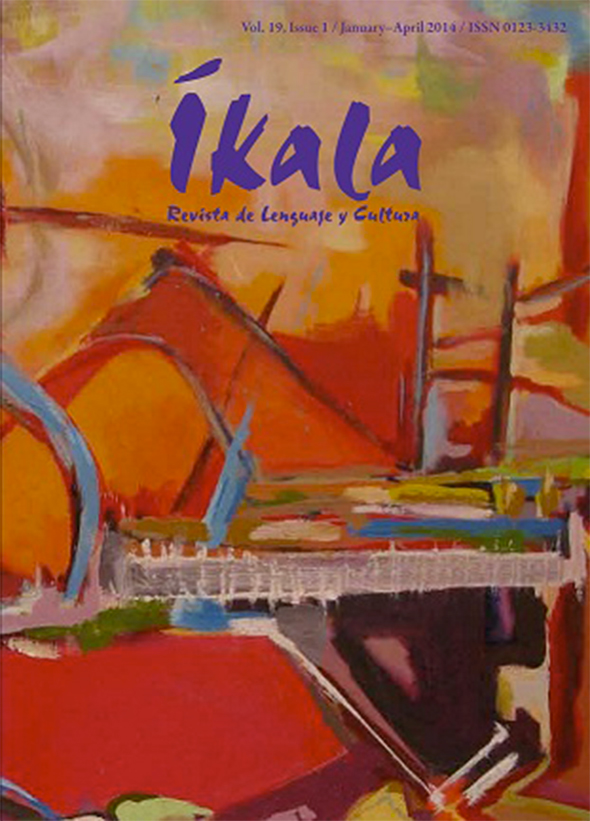Assessing the so called Marked Inflectional Features of the Nigerian English: a Second Language Acquisition Theory Account
DOI:
https://doi.org/10.17533/udea.ikala.14303Schlagworte:
varieties of English, second language, inflections, interlanguageAbstract
There are conflicting claims among scholars on whether the structural outputs of the types of English spoken in countries where English is used as a second language gives such speech forms the status of varieties of English. This study examined those morphological features considered to be marked features of the variety spoken in Nigeria according to Kirkpatrick (2011) and the variety spoken in Malaysia by considering the claims of the Missing Surface Inflection Hypothesis (MSIH) a Second Language Acquisition theory which accounts for the cause of the variable use of such inflections among L2 learners. Results from oral and written composition tasks administered on selected undergraduate students of Nigerian and Malaysian universities revealed that what is regarded as morphological features are actually a deviation from the L2 target forms. According to the MSIH the variability in the use of such inflections is due to problems of lexical retrieval a psycholinguistic problem which manifests among L2 learners of English generally which results in wrong surface representations.
Downloads
Literaturhinweise
Adegbija, E. (1989). Lexico-semantic variation in Nigerian English, World Englishes. Vol. 8, No.2, pp. 165-177.
Adetugbo, A. (1979). Appropriateness in Nigerian English & Nigerian English and communicative competence. In E. Ubahakwe (Ed.), Varieties and functions of English in Nigeria, pp. 137-165 & 167-183 respectively. Ibadan: African Universities Press.
Alo, M., & Mesthrie, R. (2008). Nigerian English: morphology and syntax. In R. Mesthrie, (Ed.), Varieties of English, Africa, South and Southeast
Asia, (pp. 323-339). Berlin: Mouton de Gruyter.
Bamiro, E. (1991). Nigerian Englishes in Nigerian English literature, World Englishes. Vol. 10, No. 1, pp. 7-17.
Bamiro, E. (1991). The social and functional power of Nigerian English, World Englishes. Vol. 10, No. 3, pp. 275-286.
Battistella, E. L. (1990). Markedness: The evaluative superstructure of language. Albany, NY: SUNY Press.
Chomsky, N. (1986). Knowledge of language: its origin, nature and use. New York, Praeger.
Geckin, V., & Hazenadar, B. (2008). The morphology/ syntax interface in child L2 acquisition: evidence from verbal morphology. Current trends in child second language acquisition: A generative perspective. In B, Haznedar & E. Gavruseva (Eds.), 237-270. Amsterdam: John Benjamins.
Gut, U., & Fuchs. R. (2013). Progressive aspect in Nigerian English. Journal of English linguistics 41(3), 243-276.
Hazenadar, B. (2007). The acquisition of tense-aspect in child language English. Second Language Research 23, (4) 383-417.
Haznedar, B., & Schwartz, B. (1997). Are there optional infinitives in child L2 acquisition? In Proceedings of the 21st annual Boston University conference on language development. In E. Hughs, & A. Greenhill (Eds.), 257-268. Sommerville, MA: Cascadilla Press.
Ionin, T., & Wexler, K. (2002). Why is 'is' easier than '-s'? Acquisition of tense/agreement morphology by child second language learners of English. Second Language Research, 18, 95-136.
Jakobson, R. (1984). Shifters, verbal categories and the Russian verb. Selected writings, Vol. 2: Word and Language, 130-147. The Hague: Mouton.
Kachru, B. (1987). The alchemy of English: The speed, functions and models of non-native Englishes, World Englishes. Vol. 8, No. 2, pp.239-241. Reviewed. by J. Fishman.
Kachru, B. (1992a). World Englishes. In Language Teaching. Cambridge: Cambridge University Press.
Kirkpatrick, A. (2011). World Englishes. In J. Simpson (Ed.), Handbook of Applied Linguistics. London: Routledge: 373-387.
Kujore, O. (1985). English usage: Some notable Nigerian variations. Ibadan: Evans Brothers Ltd.
Lardiere, D. (1998a). Case and tense in fossilized steady state grammar. Second Language Research, 14, 1-26.
Lardiere, D. (1998b). Dissociating syntax from morphology in a divergent L2 end-state grammar. Second Language Research, 14, 359-375.
McCarthy, C. L. (2007). Morphological variability in second language Spanish. PhD Dissertation. Department of Linguistics McGill University Montreal Canada.
Ogu, J. (1992). A Historical survey of English and the Nigerian situation. Lagos: Krafts Books Ltd.
Omar, A. (Ed.). (2004). The Encyclopedia of Malaysia: Languages & literature. (9 Vol.). Michigan: Archipelago Press.
Prevost, P., & White, L. (2000). Missing surface inflection or impairment in second language acquisition? Evidence from tense and agreement. Second Language Research, 16, 103-133.
Roslie, T., & Ting, Su Hie, (1994). Malaysian English: Exploring the possibility of standardization. Perttanika Journal of social science and humanities, Vol, 2, (1). 69-76.
Selinker, L. (1972). Interlanguage. International Review of Applied Linguistics, 10, 209-231.
Salami, A. (1968). Defining a standard Nigerian English. Journal of the Nigerian English Studies Association (2)1, 99-106.
Slabakova, R. (2009). What is easy and what is hard to acquire in a second language. In Proceedings of the 10th generative approaches to second language acquisition conference. In M. Bowles, T. Ionin, S.
Montrul, & A. Tremblay, (Eds.), 280-294. Somerville, MA: Cascadilla Proceedings Project.
Walsh, N. (1967). Distinguishing types and varieties of English in Nigeria. Journal of the Nigerian English Studies Association (2)2, 47-55.
White, L, (2003). Second language acquisition and universal grammar. Cambridge University Press.
Downloads
Veröffentlicht
Zitationsvorschlag
Ausgabe
Rubrik
Lizenz
Copyright (c) 2014 Íkala, Revista de Lenguaje y Cultura

Dieses Werk steht unter der Lizenz Creative Commons Namensnennung - Nicht-kommerziell - Weitergabe unter gleichen Bedingungen 4.0 International.












